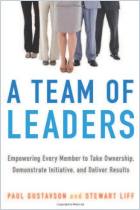Join getAbstract to access the summary!

Join getAbstract to access the summary!
Peter Hawkins
Leadership Team Coaching
Developing Collective Transformational Leadership
Kogan Page, 2011
What's inside?
For better business outcomes, turn your team over to a coach.
Recommendation
Sports coaching skills transfer well to coaching organizational leadership teams. Peter Hawkins – a coach with experience in industry, education and government – deftly explains who leadership team coaches are, what they do, and what tools and techniques they use. getAbstract recommends this hearty introduction to those who aspire to become or to work with a team coach; Hawkins can help your teams reach their goals on the field or in the boardroom.
Summary
About the Author
Peter Hawkins, a professor of leadership at the Henley Business School of the University of Reading in the UK, is also the author of Creating a Coaching Culture.























Comment on this summary